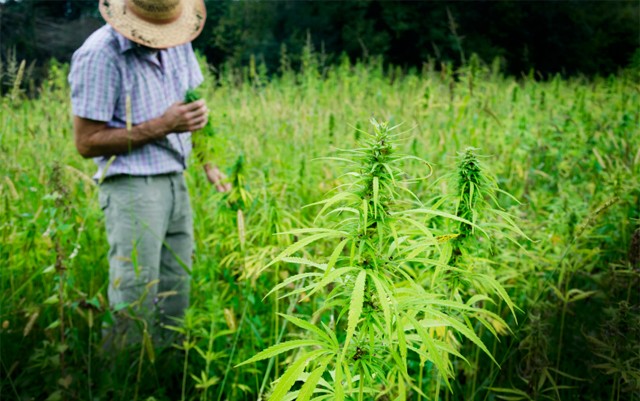The industrial hemp plant has the unfortunate circumstance of being a twin to the marijuana plant, and this has led it to lead nearly the same life of prohibition over the last several decades. It’s unfortunate when there are so many differences between hemp, beginning with the lack of high THC levels in hemp to its many different uses in clothing, plastics, paper products and more.
The good news for the hemp plant is that many places are starting to give it a second chance – states like Washington have been working to bring hemp cultivation back for just as long as they have been working towards marijuana legalization. This time it’s a pretty historic place that has chosen to legalize the growth of industrial hemp – but very soon the first hemp seeds will be planted in West Virginia since World War II.
It was 1938, when hemp was named the “Next Billion Dollar Crop” by Popular Science magazine due to its over 25,000 uses (and that was in the 1930s – with today’s technological advancements there are bound to be thousands more ways to incorporate hemp into our everyday lives.) Not long after that, it was outlawed alongside its twin marijuana and has not been grown (legally, at least) in 70 years now.
Next week, the first seeds will be spread and planted in Morgantown, West Virginia. These seeds are a part of a West Virginia University research study that hopes to see if the cannabis sativa plants can be used to clean the soil via a process called phytoremediation. They intend to plant the seeds in contaminated brownfields throughout the state that people have deemed too difficult to clean up.
“There are a lot of contaminated brownfields throughout West Virginia that people find too expensive to cleanup. We can be a complement to the state’s coal and gas industries by using a hemp cash crop to revitalize spoiled lands. This research should interest every post-industrial community in West Virginia to invest (with grants) and monetize what is now considered worthless.”- Agri Carb Electric Corporation Chief Executive Officer Don Smith II
They are planning to use the hemp plants to clean the soil, and then harvesting the crop to use for other research purposes. Talk of using hemp to make plastic car parts (like some models of BMW and other overseas brands) as well as the possibility of using hempcrete to build houses – but the possibilities don’t end there. There is also mention of nanotechnology and 3D printing (I would be all over printing my own hemp-plastic household items one day!), which will bring all new ideas into the industry for sure.
“The science is there. Hemp has long had the potential to create sustainable products that are preferable to many current technologies; however, what is really exciting is what we can do with hemp using the technologies of the future – such as genomics, nanotechnology and 3D printing.”- Agri Carb Electric Corporation Chief Operating Officer Erik Janus
Along with using hemp to clean contaminated soils and finding newer, more efficient ways to use hemp, there will also soon be a commercial hemp industry as it will be a cash crop. The hope is that bringing back hemp farming will bring in a high yield cash crop that will in turn open up new jobs and an entirely new industry; considering the U.S. currently imports more hemp than any other country due to our bans on both marijuana and industrial hemp.
There are many people, including some potential new members of congress, hoping to become a part of this new industry – mainly in the form of growing the crops themselves. Back in the early days of the United States, it was required that everyone grew hemp because it was such a useful plant – and in some ways and some places, we’re finally getting back to that a little at a time.






